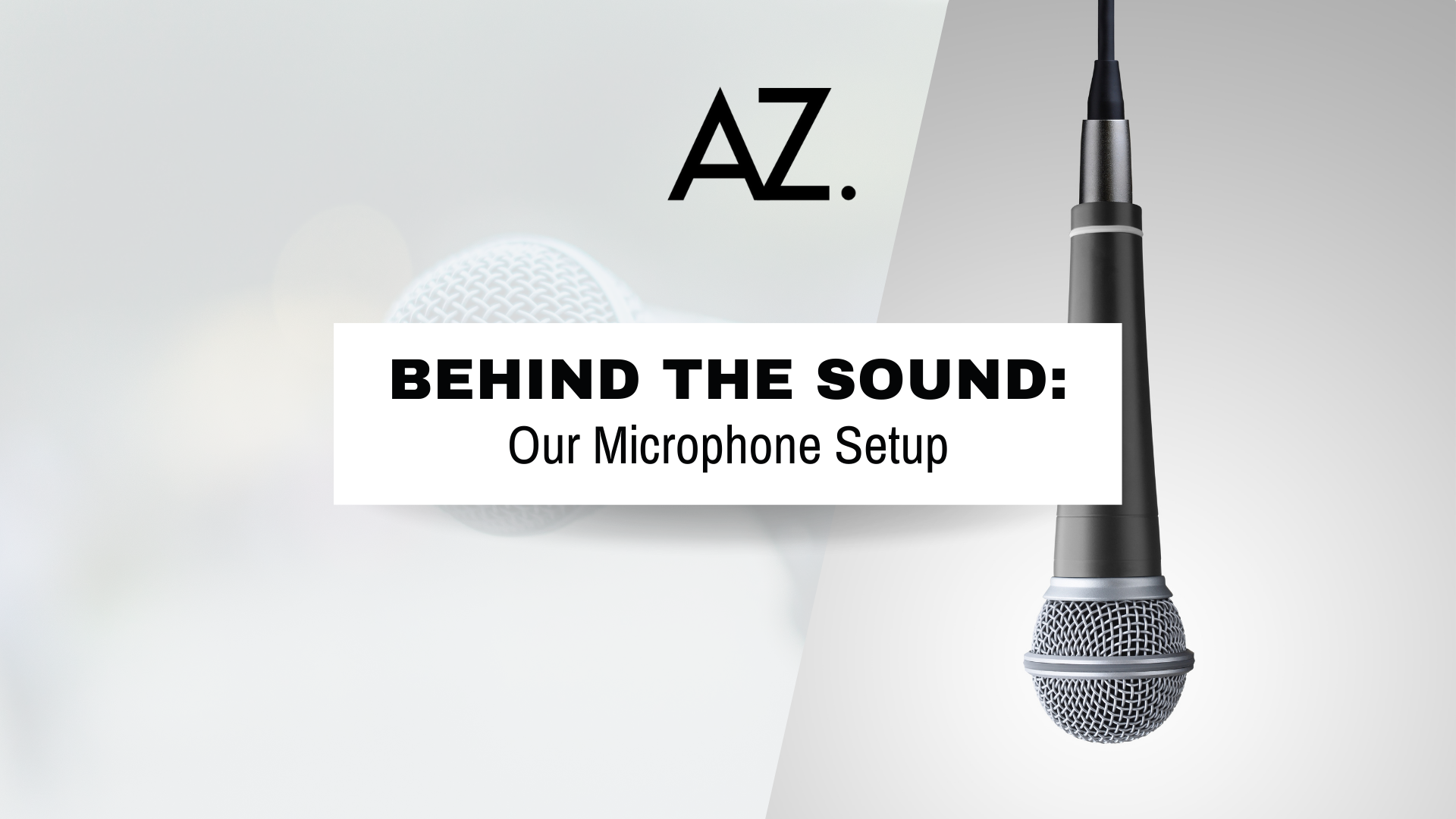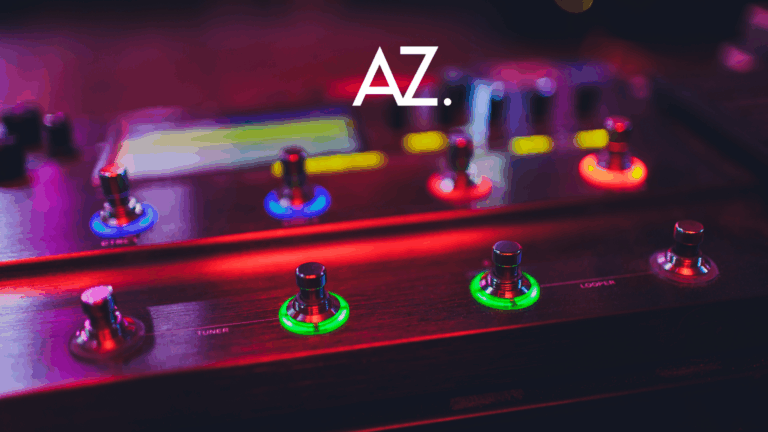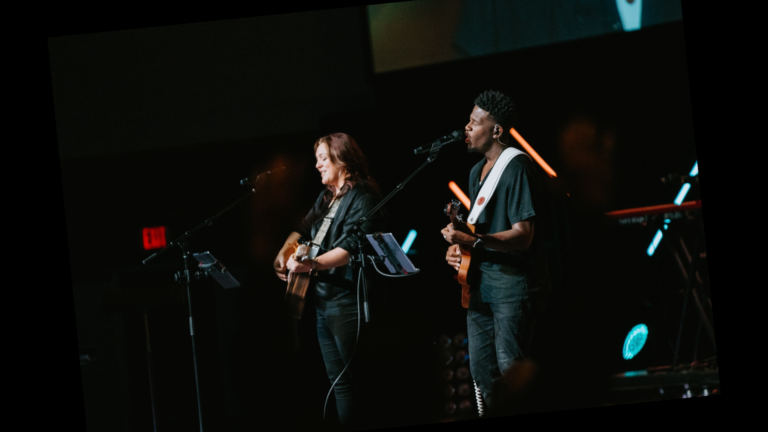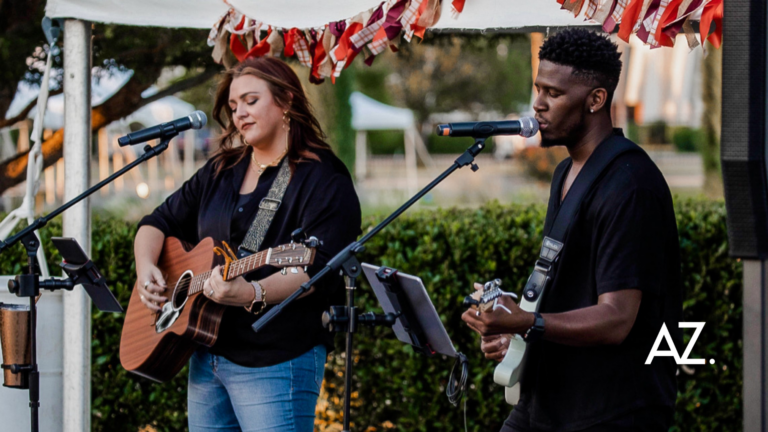
When people hear us play live or listen to our recordings, one of the first compliments we get is about the clarity of our sound. That doesn’t happen by accident — it comes down to the microphones and the way we set them up. Today, we’re pulling back the curtain on the gear we use, why we chose it, and the techniques that help us get clean, professional sound whether we’re on stage or in our home studio.
The Backbone: Shure GLXD24R+/SM58
Every singer knows the Shure SM58. It’s the workhorse of live music — durable, reliable, and forgiving in almost any environment. We pair it with Shure’s GLXD24R+ wireless system available here, which frees us from cables and lets us move naturally on stage. The dual-band wireless tech is stable, the battery runs up to 12 hours, and if we need a quick recharge, 15 minutes of charging gets us another 1.5 hours of use.
In short: the SM58 capsule gives us the sound we trust, while the wireless system gives us the freedom to perform without being tethered.
Small Details That Matter
It’s not just the microphone itself that makes the difference. Accessories and backup gear play a big role:
- Foam Windscreens — These little covers keep plosives (“P” and “B” sounds) under control and help tame breath noise. We always keep extras on hand. You can find the exact ones we use here.
- Shure Beta Mic — A great alternative capsule for slightly brighter, more detailed vocals. Ours is this one.
- JBL Wireless Mic — Handy for events where we need a solid secondary option. This model has been reliable for us.
- Quality cables, stands, and room treatment — They may not be glamorous, but they prevent hum, hiss, and echo so the mic can do its job.
These little things might not get noticed in a gear list, but they’re the secret sauce to keeping the sound consistent.
Placement Is Everything
Even the best mic won’t sound great if it’s placed poorly. We usually keep the mic about 6–12 inches from the singer, angled slightly off to the side so air from plosives doesn’t hit it directly. Add a windscreen, and you’ve already solved 80% of the problems most people struggle with when recording vocals.
We also adjust placement depending on the situation: closer for warmth, farther for a more natural, airy sound. When recording in the studio, we sometimes add a second mic in the room to capture the space’s natural character.
Gain, Noise, and Monitoring
Once the mic is placed, the next step is gain staging — setting the input level so the performance is strong without clipping. We aim for healthy signal peaks while leaving plenty of headroom. Cheap or damaged cables can ruin an otherwise great take, so we stick with shielded XLRs and keep them short.
On the monitoring side, we minimize latency (the delay between singing and hearing it back) by using direct monitoring or low-buffer settings in our interface. Keeping latency under 6ms helps singers feel connected to their performance.
A Session in Practice
Here’s how it looks when we track vocals in the studio:
- Warm up and test the mic placement.
- Add a windscreen and adjust the angle slightly off-axis.
- Set preamp gain so peaks sit safely below clipping.
- Give the vocalist a comfortable headphone mix — a little reverb goes a long way.
- Record multiple takes, listening back for pops or noise before moving on.
Simple, repeatable steps — but they make a huge difference.
Why It All Matters
If you’ve read our post on Top 5 Must-Have Items for Every Artist Recording at Home, you know we believe the microphone chain is one of the best investments you can make. A solid mic, proper placement, clean gain, and basic accessories will always beat a flashy plugin trying to “fix” a weak signal.
Our setup isn’t about having the most expensive gear. It’s about choosing reliable tools, using them well, and paying attention to details that other people might overlook. That’s what allows us to create recordings and performances that sound polished — and more importantly, feel natural.
Final Thoughts
Microphones are more than just tools; they’re the gateway between performance and audience. With the Shure GLXD24R+/SM58 link, simple accessories like windscreens, and solid alternatives like the JBL Wireless and Shure Beta, we’re able to capture the sound we want every time.
Whether you’re building your first home studio or leveling up your live rig, remember: the mic setup is where great sound begins.
Stay Connected With Us
Want more behind-the-scenes tips, music updates, and indie musician encouragement delivered straight to your inbox?
Sign up for our newsletter at the bottom of the page!
Follow us on Social Media for more gear tips, song ideas, and real-world insights from life as a husband-wife music duo.
LinkedIn: @fromatoz
Instagram: @FromatozProductions
Facebook: From a to Z Productions
TikTok: @FromatozProductions
YouTube: From a to Z Productions
Pinterest: @fromatozproductions





